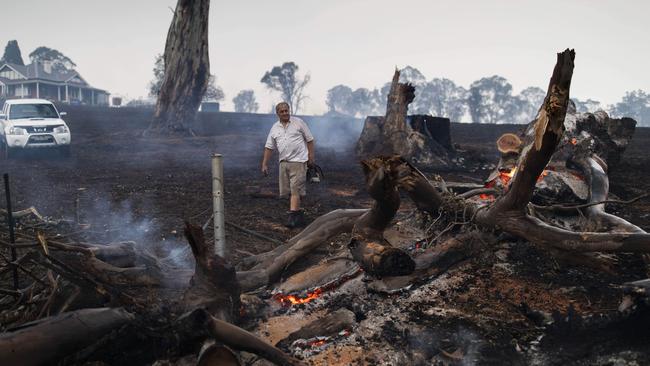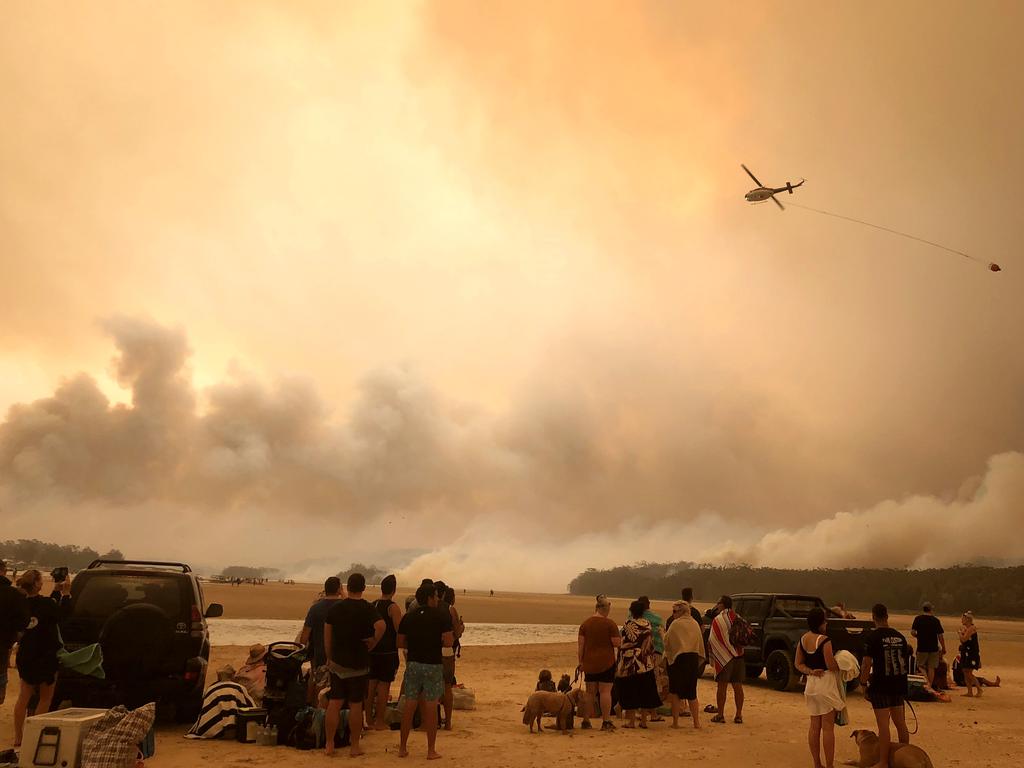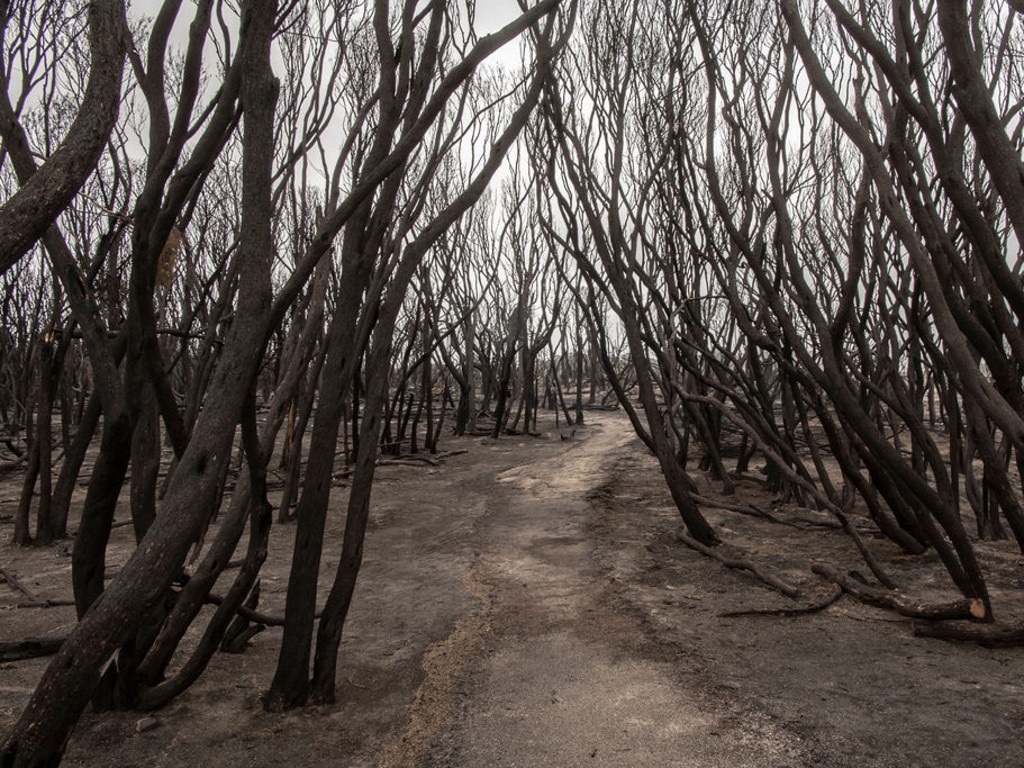Bushfires released two years’ worth of CO2 into atmosphere
The bushfires released 830 million tonnes of carbon dioxide into the atmosphere: almost double the nation’s annual emissions.

Australia’s bushfire crisis burnt about 7.4 million hectares of temperate forests and released 830 million tonnes of carbon dioxide into the atmosphere, an amount almost double the nation’s annual emissions from energy, industry and transportation.
The extra emissions will not be counted towards Australia’s Kyoto and Paris agreement targets, however, because it is assumed the CO2 will be reabsorbed by trees as they regrow.
In a submission to the Bushfires Royal Commission on Tuesday, the federal Department of Industry, Science, Energy and Resources says the 2019-20 bushfires will have negligible impact on progress towards Australia’s 2020 or 2030 targets.
Emissions Minister Angus Taylor said the extra emissions would not be counted unless there was a change in land use in the areas that were burnt.
He said 90 per cent of affected areas were in national parks and other conservation areas or in state forests managed for timber production.
Australia currently emits about 530 million tonnes of CO2 a year.
The Environment Department submission says 96 per cent of emissions from the 2002-03 Canberra bushfires have been reabsorbed. Changes in land use around Canberra after the fires reduced the recovery total.
The Department of Industry, Science, Energy and Resources estimates that the recovery of forests affected by the 2019-20 bushfires will be complete and it will actively monitor the affected areas to ensure this is the case.
Bushfires are covered by a “natural disturbances provision” in Australia’s emissions accounting methodologies. The provision was originally negotiated for the Kyoto Protocol in 2011.
Based on Intergovernmental Panel on Climate Change guidance agreed in May 2019, countries report two inventories, one with and one without natural disturbances provision.
The approach is currently applied for the government’s 2020 Kyoto Protocol target. The government said it would apply the approach towards its 2030 Paris target when the target was agreed in 2015.
The Australian approach mimics the outcomes achieved by the US and some Nordic forest countries, which deploy a sampling approach to the direct measurement of forests and report long-term carbon stock changes.
Canada and the EU also apply similar approaches to Australia in their treatment of emissions from fire in their accounting against their targets.
The department submission says Australia’s National Greenhouse Accounts include carbon emissions and post-fire sequestration associated with bushfires, based on satellite monitoring of fires across Australia and advanced carbon modelling of fire-prone ecosystems.






